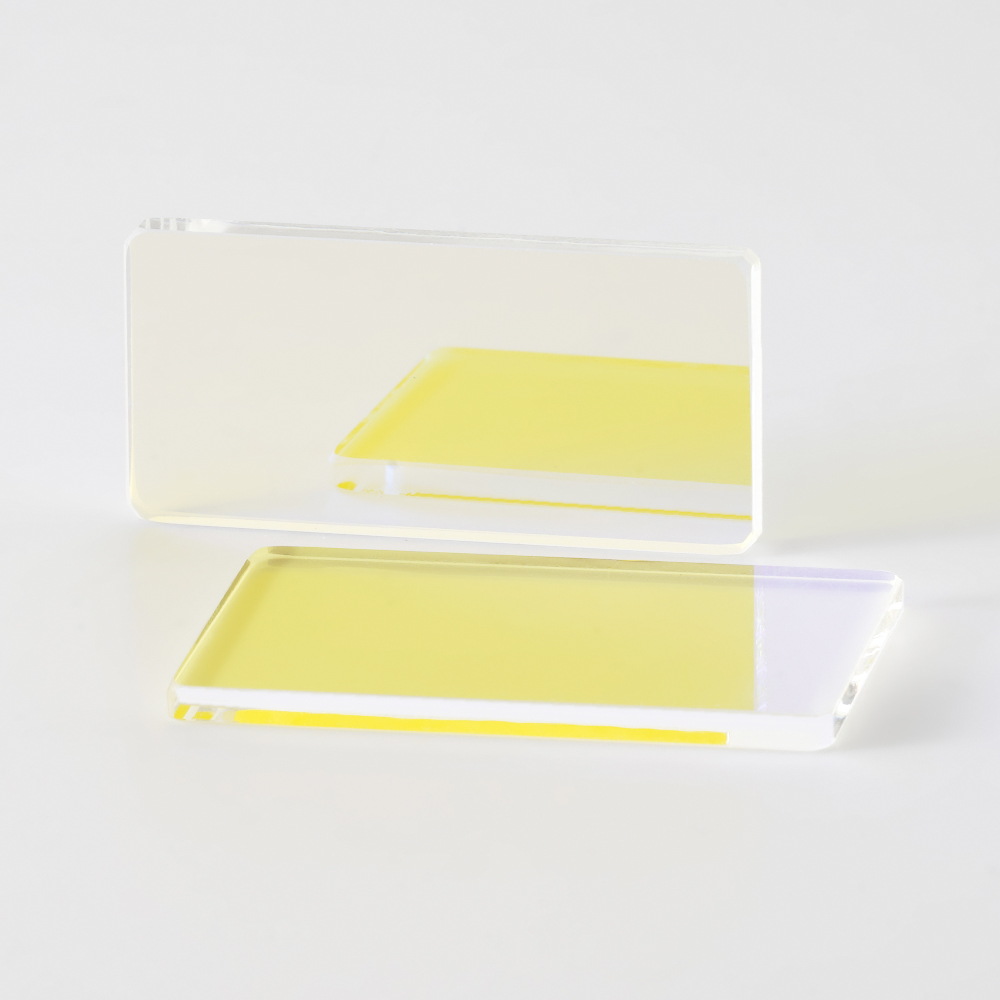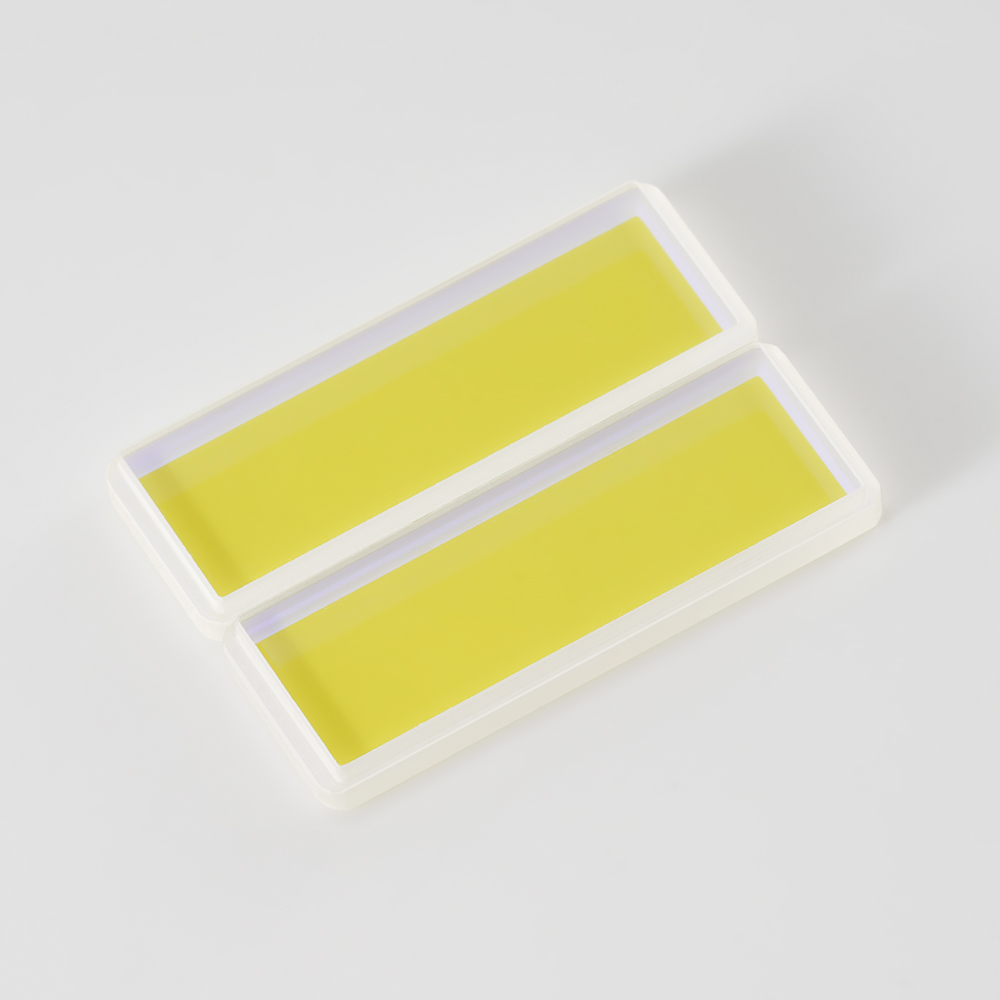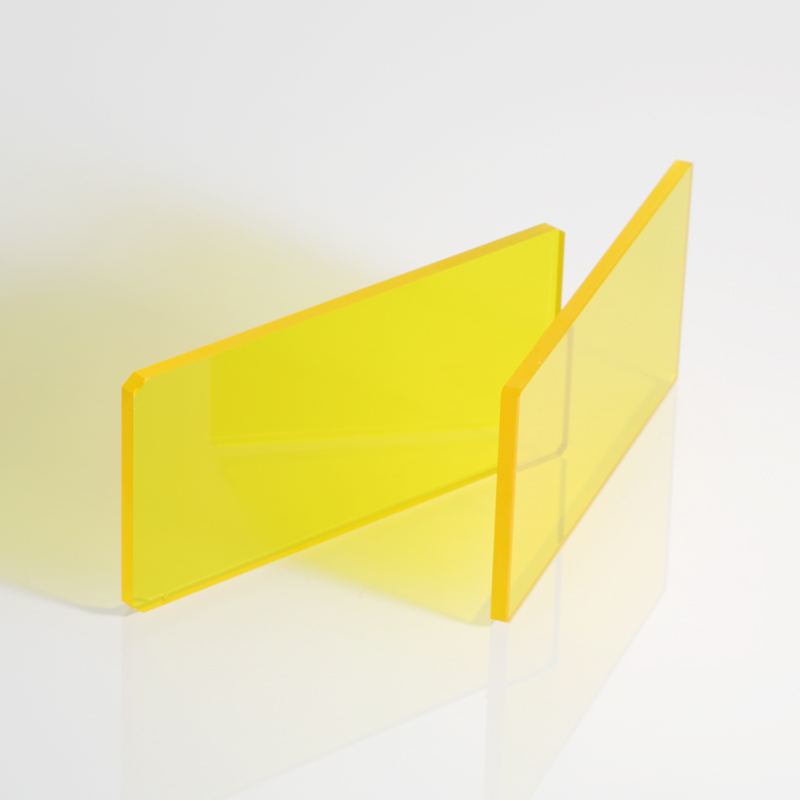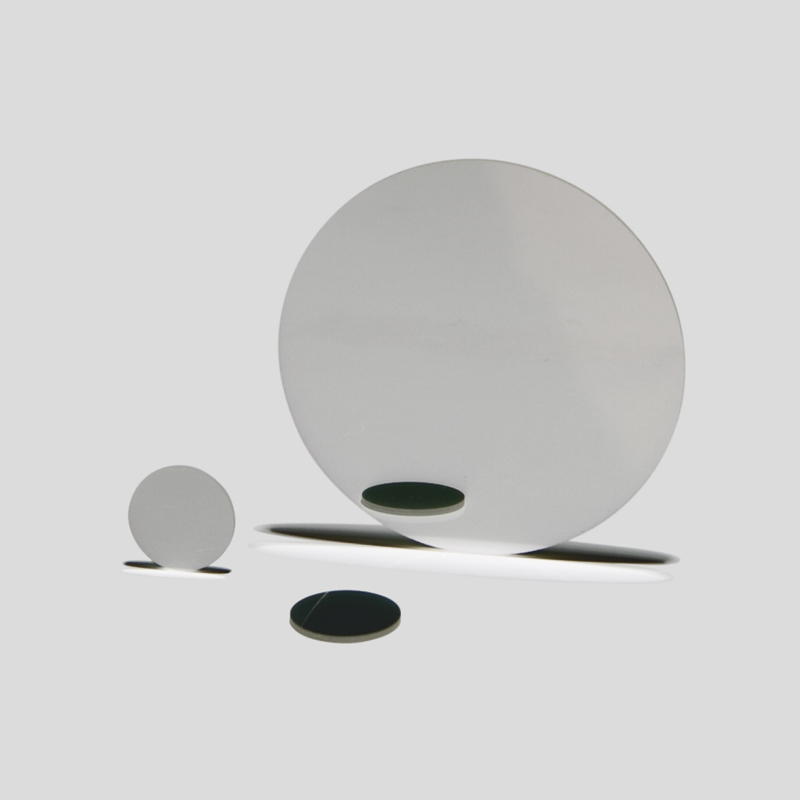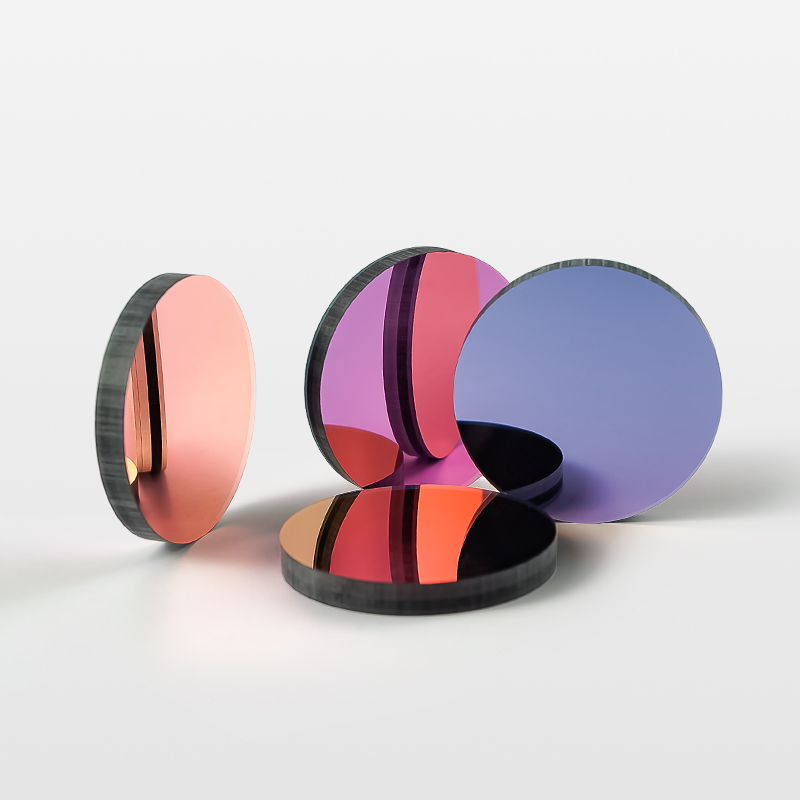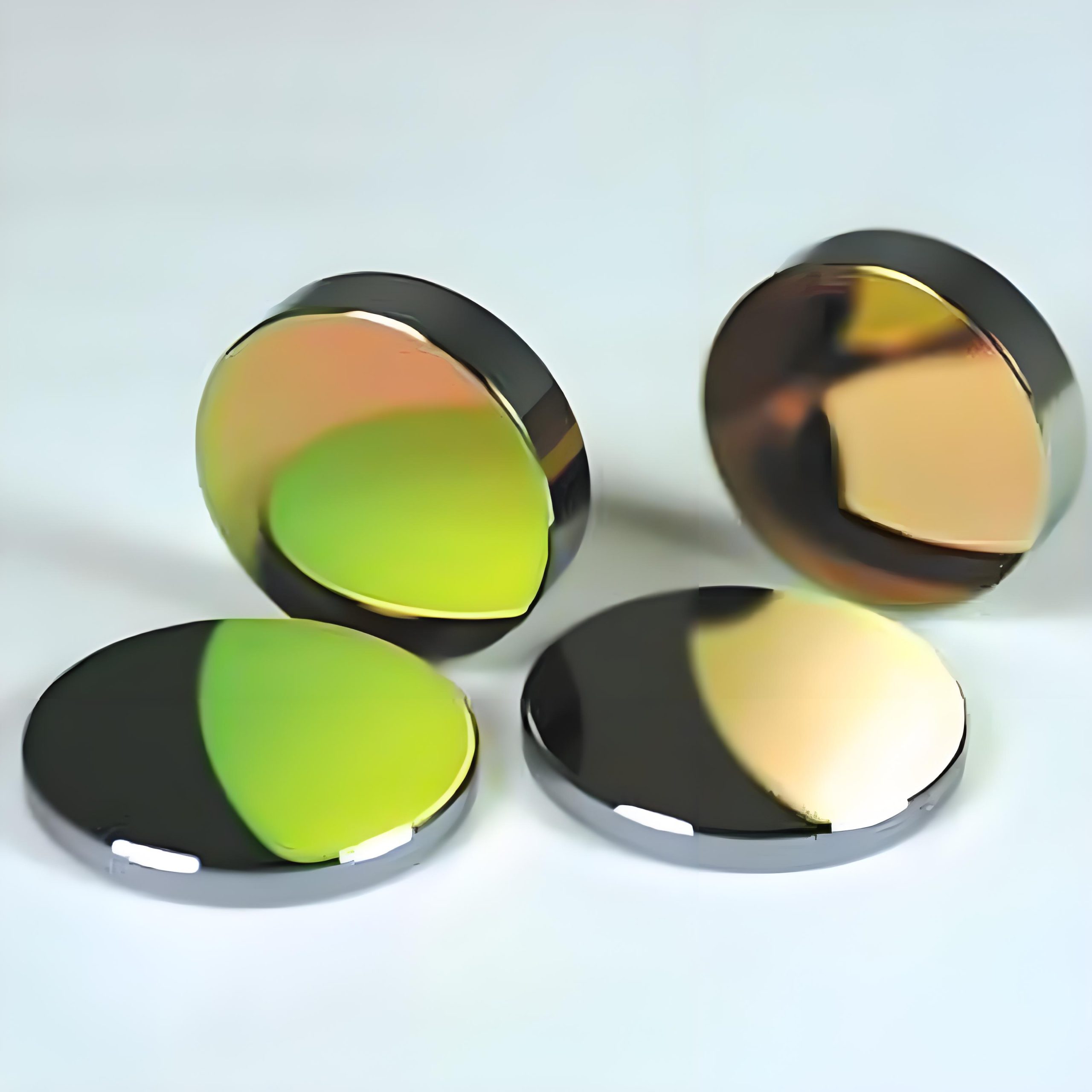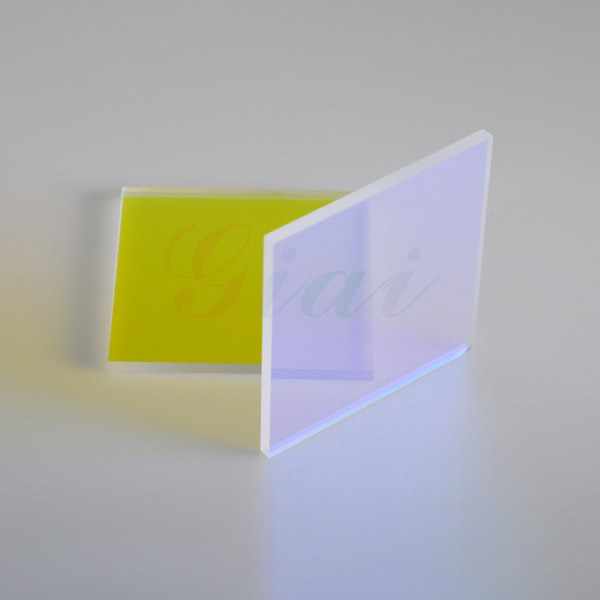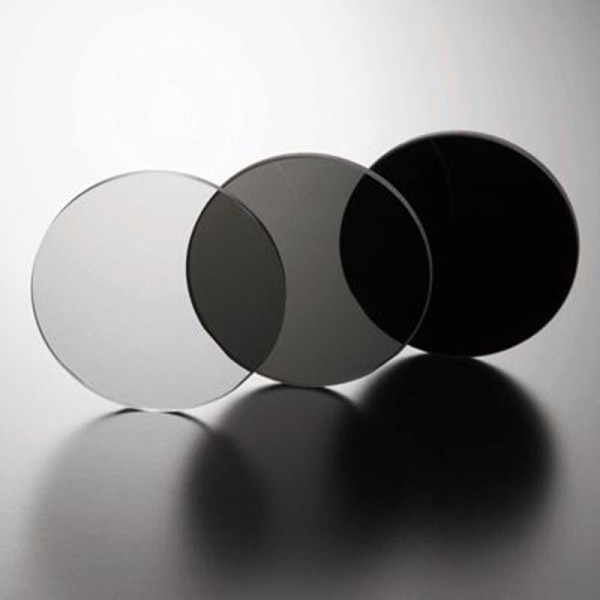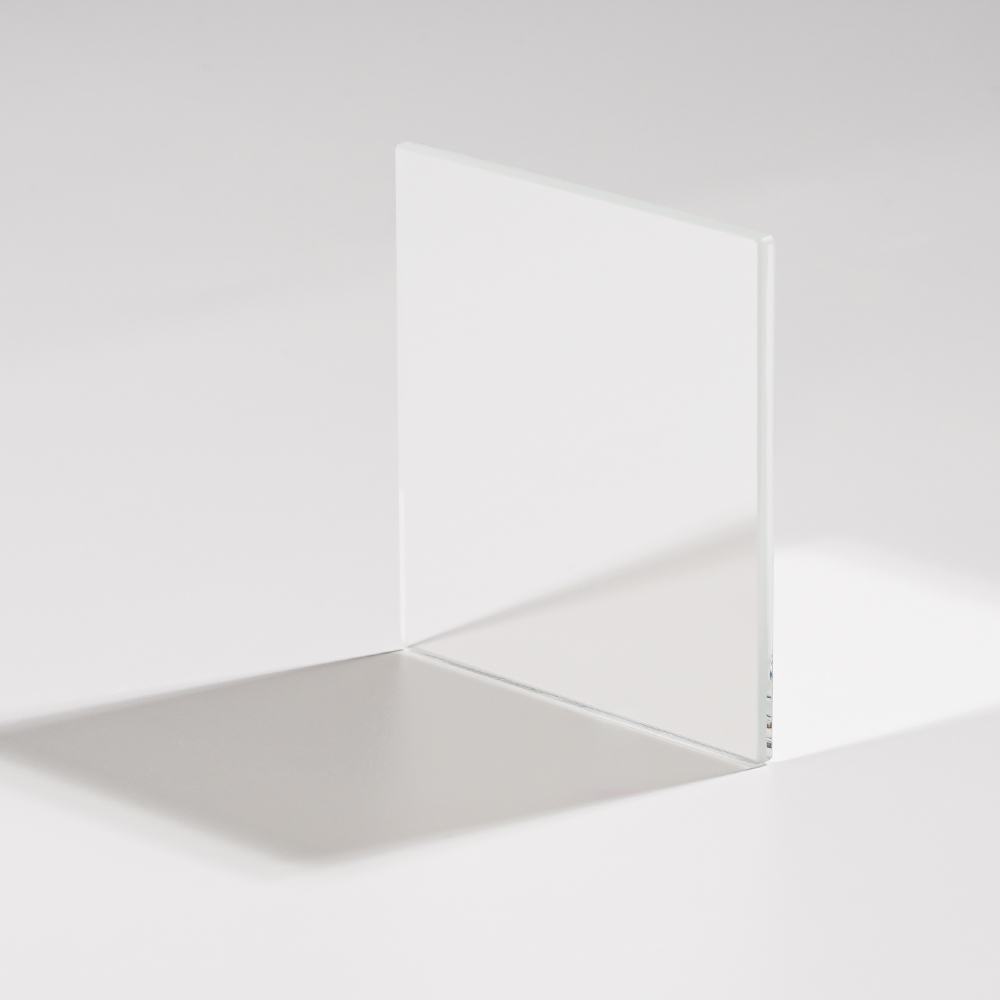
A 40:60 beam splitter is an optical component that distributes incident light into different directions in a specified ratio. It is usually made of optical glass or thin film materials with special coatings and is used to split a light beam into two or more parts. A 40:60 beamsplitter means that the beamsplitter can transmit 40% of the intensity of the incident light and reflect the remaining 60% to another direction. This type of beamsplitter is widely used in optical systems, especially in the fields of imaging, detection, interferometry, etc.
Model: 40:60 Beam Splitter
Specifications: Customized
Material: Optical glass
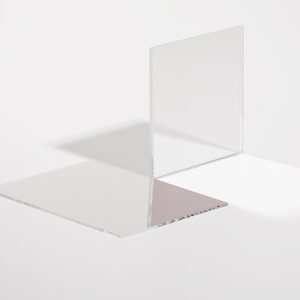
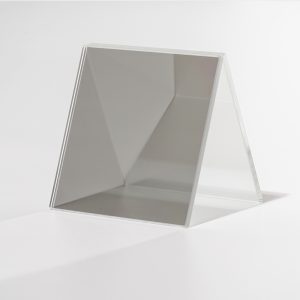
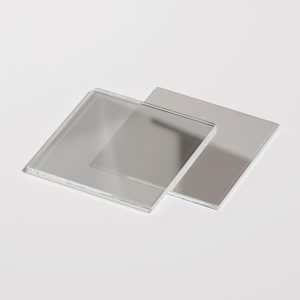
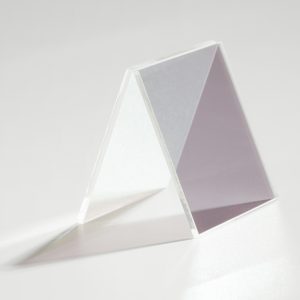
Product parameters
- Working band: 400nm-700nm
- Splitting ratio: T:R=40:60
- Splitting error: ±1%
- Incident angle: 0°-45°
- Smoothness: 60/40
Features
Splitting ratio: 40:60 beam splitter distributes the incident light in a ratio of 40% transmission and 60% reflection, which is suitable for occasions where asymmetric distribution of light energy is required.
Wide spectral range: This beam splitter can be designed for different spectral ranges (such as visible light, near infrared or other bands) as needed, providing uniform beam splitting effect within a specific wavelength range.
High reflectivity and transmittance: According to the coating design, the 40:60 beam splitter can ensure that the specified proportion of light energy is accurately distributed while maintaining high transmittance and reflectivity to reduce light loss.
High optical performance: The use of multi-layer coating technology makes the beam splitter highly anti-reflective and durable, reducing light loss and errors caused by reflection or refraction.
Advantages of 40:60 beam splitter
Flexible beam distribution: According to the design requirements, suitable light energy distribution can be achieved in different applications to adapt to a variety of working conditions.
High efficiency and low loss: High-quality coating technology ensures low reflection loss and high splitting efficiency.
Multi-purpose adaptability: Suitable for various optical, fiber and laser systems, and can work efficiently in different wavelength ranges.
Anti-environmental interference: With good stability and anti-environmental interference, it is suitable for use in complex environments.
Main Applications
Optical imaging systems:
40:60 beamsplitters are often used in imaging systems such as optical microscopes, telescopes, and cameras to split incident light into two different parts for different detection or imaging purposes. For example, 40% of the transmitted light can be used for imaging, and 60% of the reflected light can be used for illumination.
Interference instruments:
In interferometric measurement systems, beamsplitters are used to split a light beam into two or more parts for comparison and measurement of interference signals. 40:60 beamsplitters can provide an appropriate beam intensity ratio to help obtain accurate interference patterns.
Laser beam splitting:
In laser applications, 40:60 beamsplitters are often used to split a laser beam into two parts, one part continues to transmit along the original path, and the other part is used for other detection equipment or lighting systems through reflection. Suitable for applications such as lidar and laser detection.
Spectrometer:
In a spectrometer, a beamsplitter is used to distribute excitation light and reflected light so that light of different wavelengths can be captured or analyzed simultaneously. For example, in some multi-channel spectral analysis, it is necessary to distribute the beam into components of different intensities.
Fiber optic communication:
In fiber optic communication systems, splitters are often used to distribute signals to different channels. 40:60 splitters can provide appropriate power distribution for fiber optic signals to achieve multiplexing or signal multiplexing.
40:60 Beam Splitter Transmittance wavelength characteristics (reference data)



